
Roots
The human story, often told through grand narratives of empires and innovations, holds quieter, yet equally profound, chronicles within its daily rhythms. Among these, the tending of hair stands as a testament to deep cultural meanings and a remarkable connection to the natural world. For those with coils and curls, the strands themselves are living archives, whispering tales of ancestral wisdom and ingenuity. Unfurling these stories reveals not just practices of care, but reflections of identity, status, and spirit across civilizations.
Across vast stretches of time and diverse landscapes, historical societies recognized the distinct needs of textured hair. They observed its inherent inclination towards dryness, its tendency to shrink, and its capacity for boundless volume. Their responses were not merely superficial attempts at grooming; rather, they represented a profound understanding of hair’s biological properties and its cultural significance. From the earliest human settlements, the hands that tilled the soil also learned to nurture the hair, transforming botanical gifts into potent elixirs and shaping tools from earth’s raw materials.
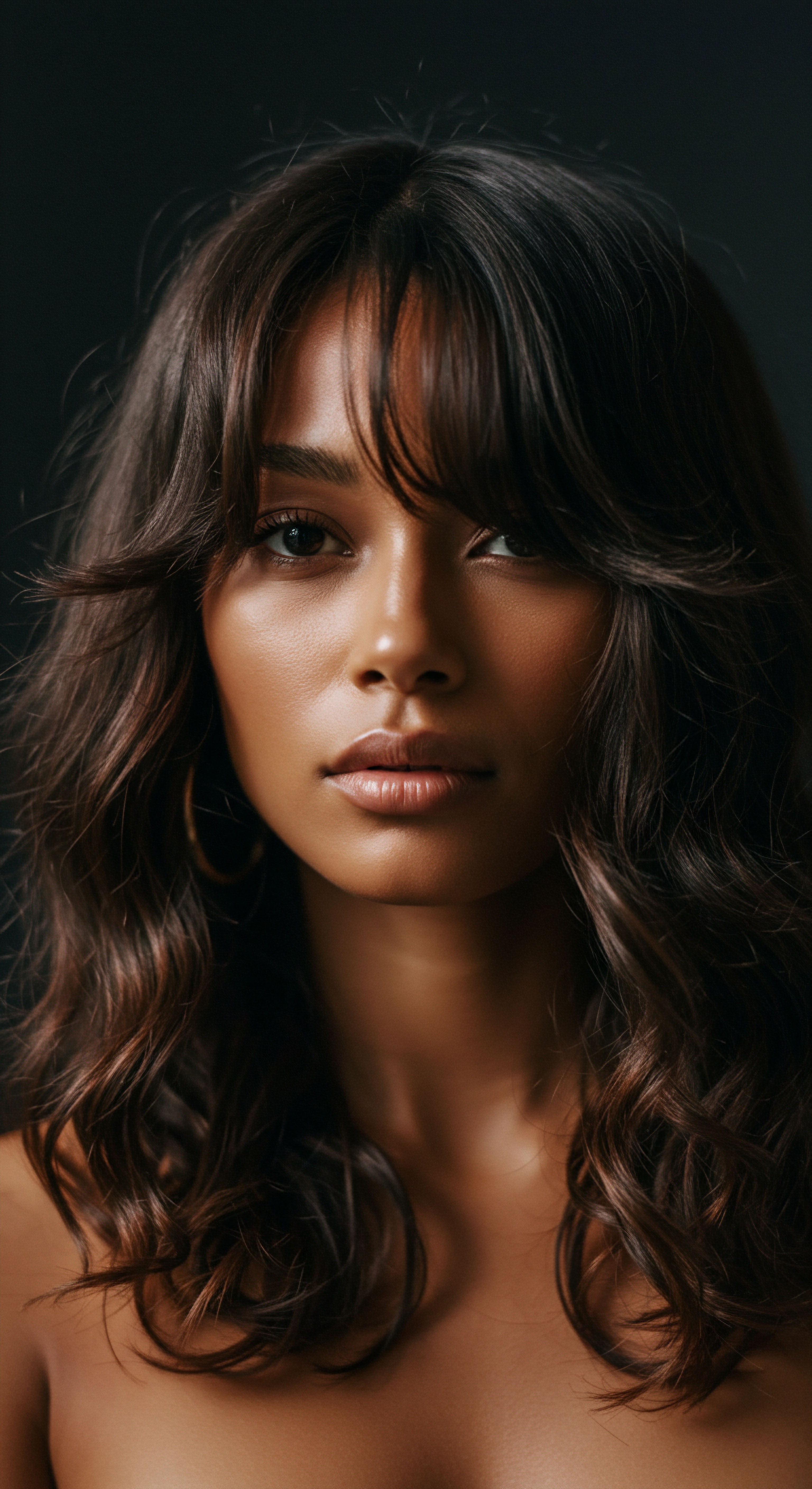
Ancient Civilizations and Hair’s Deep Meanings
In ancient African societies, hair was a powerful medium of communication, speaking volumes about an individual’s place within the community. Styles could signal age, marital status, occupation, religious affiliation, and even social rank. For example, some cultures saw women wearing braids or cornrows when unmarried, shifting to looser or covered styles once wed.
The act of tending hair was communal, often a social gathering that strengthened familial bonds. This communal grooming, particularly among African women, created spaces for shared wisdom and connection, where techniques and stories flowed freely between generations.
The reverence for hair extended into the spiritual realm. Many African cultures held the belief that hair possessed magical properties, serving as a conduit to ancestors and the divine. The very top of the head was often regarded as the entry point for spiritual energy.
This conviction transformed hair care from a mundane task into a sacred ritual, intertwining personal appearance with spiritual well-being. The Maasai people of East Africa, for instance, held specific beliefs about hair and its connection to spiritual energy, highlighting this deep cultural bond.
Hair, across historical societies, was a vibrant language, communicating identity, status, and spiritual connection through its myriad forms and meticulous care.

Early Tools and Natural Resources for Textured Hair
The tools used in ancient hair care were born from necessity and a keen observation of nature. Early peoples crafted combs, pins, and razors from readily available materials such as wood, bone, and ivory. These implements were not solely for personal hygiene; they also carried symbolic weight, often buried with their owners, signifying their importance in both life and beyond. The very first combs, dating back thousands of years, reveal an early understanding of hair’s needs.
Archaeological findings from Kush and Kemet, regions known today as Sudan and Egypt, have unearthed long-toothed combs, some estimated to be 6,000 to 7,000 years old. These ancient tools, often adorned with carvings of birds, bull horns, and hippopotamuses, bear a striking resemblance to what we recognize today as Afro combs. This discovery challenges conventional understandings, revealing a deep history of specialized tools designed for textured hair, underscoring the sophistication of early African hair care.
The environment itself served as a vast apothecary. Ancient societies drew upon a rich array of natural ingredients to cleanse, condition, and style textured hair.
- Clay ❉ Often used for cleansing and absorbing excess oil, offering a gentle alternative to modern detergents.
- Oils and Butters ❉ Substances like shea butter, castor oil, moringa oil, and almond oil provided essential moisture, protected strands from harsh climates, and imparted a healthy sheen.
- Herbs and Plants ❉ Aloe vera, sage, cedarwood oil, and yucca root were prized for their cleansing, soothing, and growth-promoting properties.
These natural resources were not merely applied; they were often combined in specific ways, sometimes through fermentation or infusion, to enhance their efficacy.

A Look at Ancient Egyptian Hair Preparations
Ancient Egyptians, known for their meticulous grooming, were particularly adept at caring for textured hair, whether their own or the elaborate wigs they favored. Evidence from mummies suggests the widespread use of fatty substances as styling products, some containing palmitic and stearic acids. These were likely used to maintain intricate styles and provide a protective layer against the desert climate. Henna, derived from the Lawsonia plant, was a popular choice for coloring hair, covering gray strands, and providing a reddish tint, while also offering conditioning benefits.
| Ingredient Shea Butter |
| Primary Use Moisturizing, protecting, promoting growth |
| Cultural Context West Africa, centuries of use |
| Ingredient Yucca Root |
| Primary Use Natural shampoo and conditioner |
| Cultural Context Indigenous North American tribes |
| Ingredient Castor Oil |
| Primary Use Hydration, growth, texture improvement |
| Cultural Context Ancient Egypt, still used today |
| Ingredient Henna |
| Primary Use Hair dye, conditioning, strengthening |
| Cultural Context Ancient Egypt, widespread use |
| Ingredient These natural elements formed the backbone of historical hair care, providing nourishment and style. |
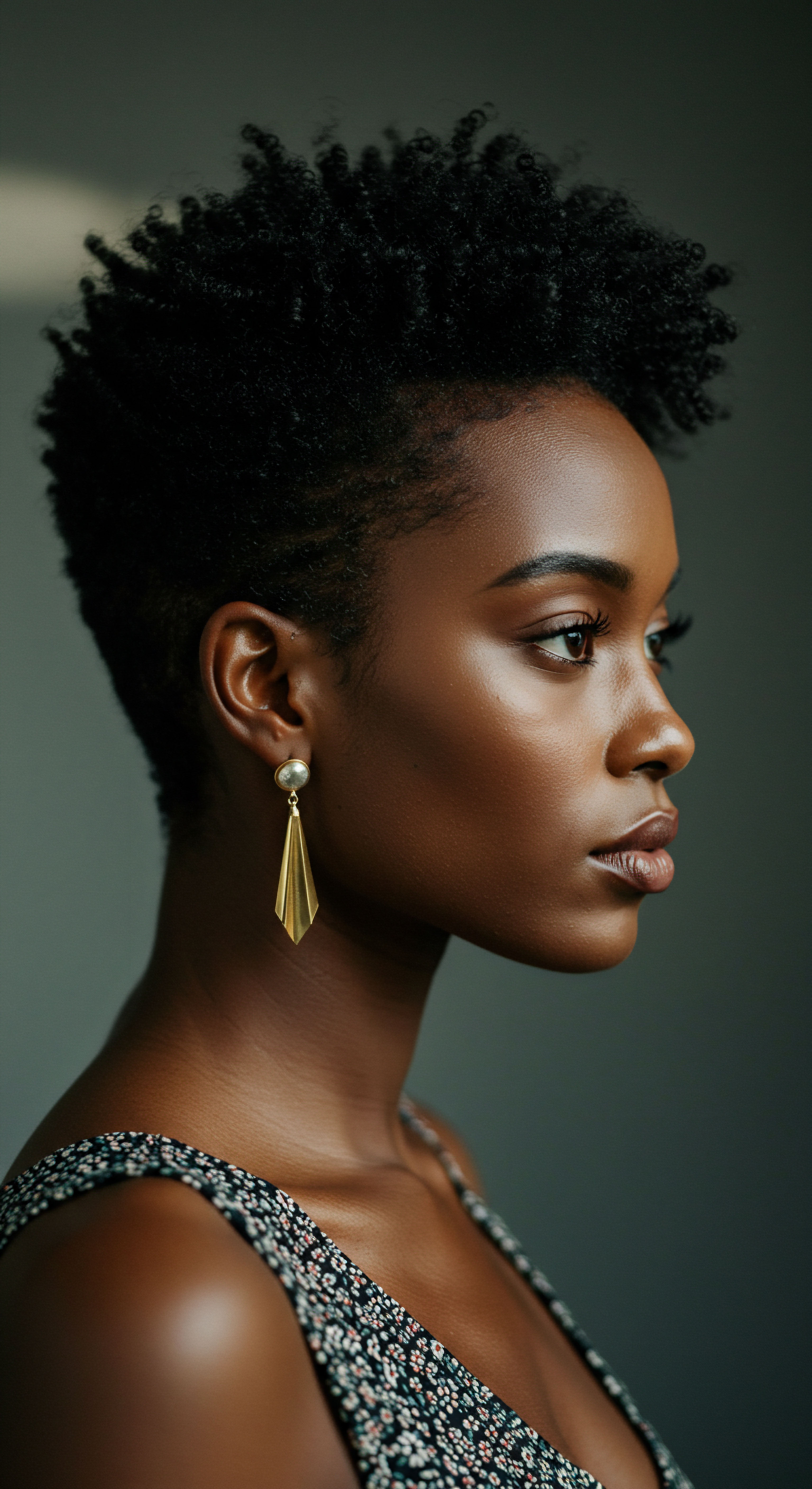
Ritual
As we move beyond the foundational understanding of hair’s place in ancient societies, a more applied wisdom comes into view. The daily and periodic practices that shaped the care of textured hair were far from random acts; they were often deliberate rituals, imbued with purpose and deep understanding. These practices reveal how communities nurtured their coils and curls, transforming personal grooming into an art and a science, passed down through generations with gentle guidance.
The rhythms of historical hair care were deeply intertwined with the cycles of life and the demands of the environment. From elaborate styling sessions that lasted for hours or even days to simple daily applications of natural oils, these rituals addressed the specific characteristics of textured hair. The inherent dryness of many textured hair types meant that moisturizing and sealing practices were paramount, long before these terms became part of modern hair science.

Cleansing and Conditioning Practices of Yesteryear
Before the advent of commercial shampoos, cleansing was achieved through ingenious methods utilizing natural resources. Yucca root, for instance, was a common ingredient among Native American tribes, crushed and mixed with water to produce a soapy lather that cleansed and nourished the hair. In other regions, various clays, like rhassoul clay, were used for their absorbent properties, effectively removing impurities without stripping the hair’s natural oils.
Conditioning was an ongoing practice, often involving the liberal application of plant-derived oils and butters. Ancient Egyptians, for example, used beeswax, castor oil, and almond oil to soften hair, add shine, and protect it from the arid climate. These preparations were not merely for aesthetic appeal; they provided vital moisture and created a protective barrier, crucial for maintaining the integrity of textured strands. The practice of massaging these oils into the scalp was also common, promoting scalp health and stimulating circulation, a practice that echoes modern trichological recommendations.
Historical hair care was a thoughtful dance with nature, where cleansing and conditioning were achieved through ingenious uses of botanical gifts.
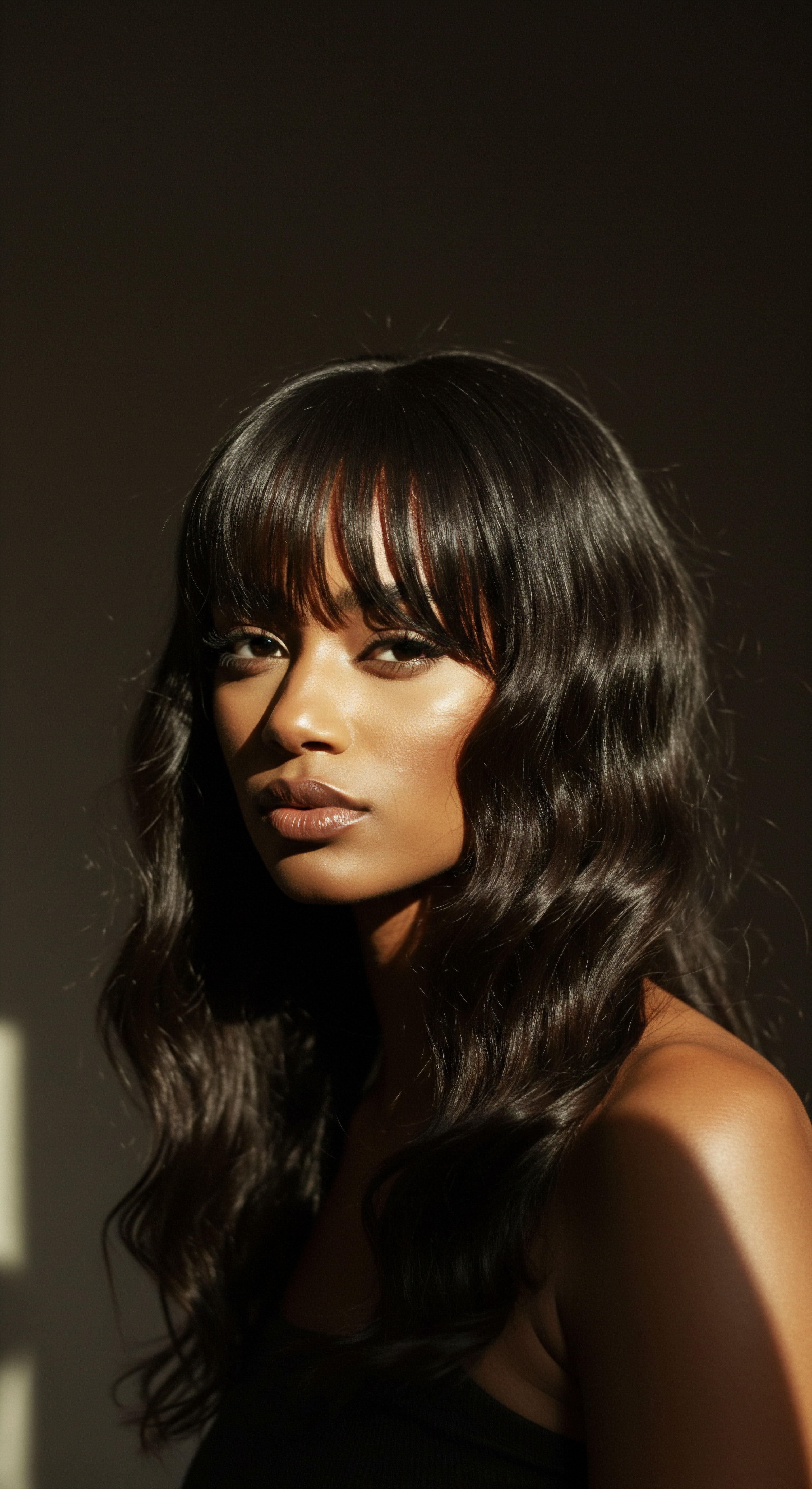
Styling Techniques and Protective Measures
Styling textured hair in historical societies was often a sophisticated art form, serving both aesthetic and practical purposes. Braiding, twisting, and coiling were not just decorative; they were fundamental protective styles that minimized manipulation, reduced breakage, and preserved moisture.
- Braids and Cornrows ❉ These styles, with origins dating back thousands of years in African cultures, were not only visually striking but also highly functional. They kept hair neatly contained, protecting it from environmental elements and daily wear. In some instances, during the transatlantic slave trade, enslaved African women, particularly rice farmers, ingeniously braided rice seeds into their hair as a means of survival, preserving both sustenance and cultural heritage. This historical act highlights the deep resourcefulness and resilience embedded within textured hair practices.
- Wigs and Extensions ❉ Ancient Egyptians extensively used wigs and hair extensions, made from human hair, sheep’s wool, or vegetable fibers, often stiffened with beeswax. These were worn by both men and women, signaling wealth and status, and also provided protection from the sun.
- Locs ❉ While modern locs have seen a resurgence, historical accounts and archaeological evidence suggest their presence in various ancient cultures, serving as expressions of identity, spirituality, or even defiance. The Himba tribe in Namibia, for example, uses a mixture of clay and cow fat to coat their dreadlocked styles, providing protection from the sun and aiding in detangling.
The ingenuity extended to the adornment of hair. Shells, beads, feathers, and metals were commonly incorporated into hairstyles, transforming them into elaborate works of art. These decorations were not just for beauty; they often carried symbolic meanings, further reinforcing the communicative power of hair.

The Art of Adornment and Symbolism
The selection and placement of hair adornments often carried specific social or spiritual messages. In ancient Egypt, wealthy women adorned their hair with turquoise, malachite, and garnet. The Kushites valued tight, coiled braids and headpieces decorated with jewels, feathers, and metals, reflecting both tribal identity and religious convictions. This attention to detail underscores the profound cultural investment in hair’s appearance and its capacity to convey complex information within a community.
| Style/Method Braids/Cornrows |
| Primary Benefit Minimizes manipulation, retains moisture |
| Notable Cultural Example Pre-colonial African societies, also used for survival during slavery |
| Style/Method Wigs/Extensions |
| Primary Benefit Status symbol, sun protection, styling versatility |
| Notable Cultural Example Ancient Egypt, worn by royalty and nobility |
| Style/Method Locs with Ochre/Clay |
| Primary Benefit Sun protection, detangling, cultural expression |
| Notable Cultural Example Himba tribe, Namibia |
| Style/Method These styles were not just beautiful; they served essential practical and cultural functions. |

How Did Ancient Societies Maintain Hair Health Without Modern Products?
The maintenance of hair health in ancient times relied heavily on a philosophy of minimal intervention and deep nourishment from natural sources. Rather than frequent washing with harsh cleansers, many societies opted for less frequent, yet thorough, cleansing routines. Native American tribes, for instance, sometimes limited hair washing to flowing streams, believing this practice contributed to long, thick hair.
Dry detangling with oils or butters was a common practice, helping to prevent breakage and distribute natural emollients along the hair shaft. This method, combined with protective styling, significantly reduced the physical stress on textured hair. The emphasis was on working with the hair’s natural inclinations, rather than against them, a wisdom that resonates deeply with contemporary natural hair care principles.
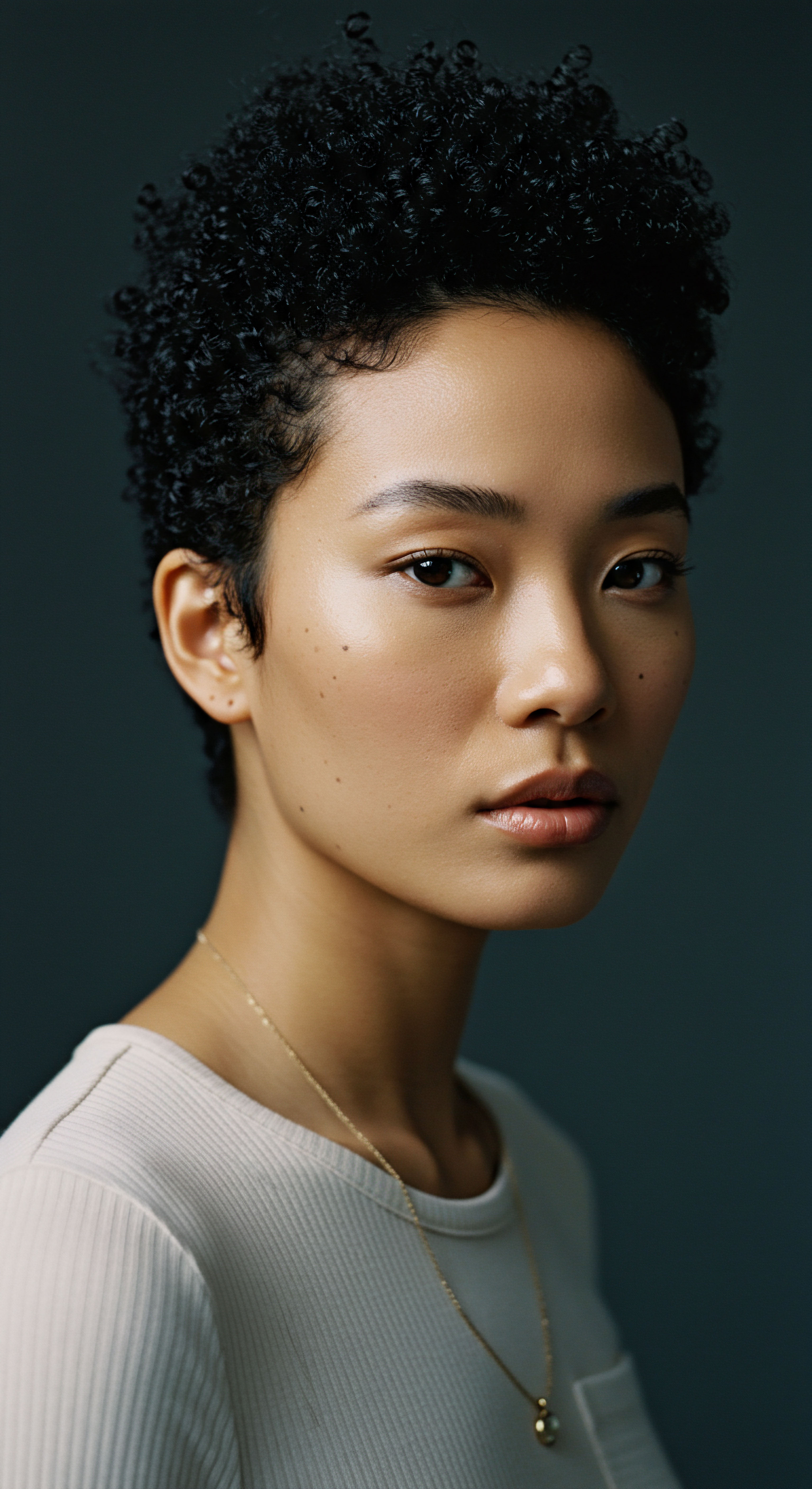
Relay
Stepping further into the intricate historical relationship with textured hair, we find ourselves at a juncture where science, culture, and societal structures converge. This deeper examination reveals not just individual practices, but the profound, interconnected systems that shaped hair care across millennia. The strands of textured hair, often viewed as purely aesthetic, served as potent symbols, biological marvels, and canvases for identity within complex social fabrics.
Understanding how historical societies approached textured hair care demands moving beyond surface-level descriptions of ingredients and styles. It requires an exploration of the underlying biological properties of textured hair and how ancient peoples, through observation and inherited wisdom, developed practices that addressed these unique characteristics. It also calls for a thoughtful consideration of how external forces, such as migration and power dynamics, altered these traditions.

What Did Ancient Societies Understand About Textured Hair’s Biology?
While ancient peoples certainly lacked modern scientific terminology, their practices reveal an intuitive grasp of textured hair’s specific needs. Textured hair, characterized by its elliptical cross-section and tightly coiled structure, possesses fewer cuticle layers than straighter hair types, making it more susceptible to moisture loss. Its spiraled shape also creates points of vulnerability along the strand, increasing the likelihood of breakage if not handled with care.
Historical societies responded to these inherent qualities through their care regimens. The pervasive use of oils and butters was a direct, albeit unarticulated, response to the hair’s tendency towards dryness. These emollients provided a protective seal, minimizing evaporation and maintaining the hair’s pliability.
Similarly, the widespread adoption of protective styles like braids and twists was a practical solution to reduce physical manipulation and shield delicate strands from environmental stressors. This approach minimized tangling and preserved the hair’s length, indicating a deep, observational understanding of how to maintain hair integrity.
Ancient hair care practices reflect an intuitive understanding of textured hair’s unique biology, emphasizing moisture retention and protective styling.

The Role of Ethnobotany in Hair Care
Ethnobotany, the study of the relationship between people and plants, provides a lens through which to appreciate the sophisticated botanical knowledge of historical societies. Indigenous communities worldwide possessed extensive understanding of local flora, identifying plants with specific properties beneficial for hair and scalp health. For example, ethnobotanical surveys in various regions document the use of numerous plant species for hair growth, dandruff management, and conditioning.
A study of Oromo women in Southeastern Ethiopia recorded 48 plant species used for traditional cosmetics, with a high informant consensus factor for hair treatment. This highlights a deep, shared knowledge base within communities regarding plant-based hair remedies.
This inherited knowledge, often passed down orally, represents centuries of empirical experimentation. The consistent use of certain plants, like aloe vera for its moisturizing and anti-inflammatory properties, or specific roots for their cleansing saponins, demonstrates a practical scientific approach. The effectiveness of these traditional remedies, though not always explained by modern chemical analysis at the time, was validated through generations of successful application.
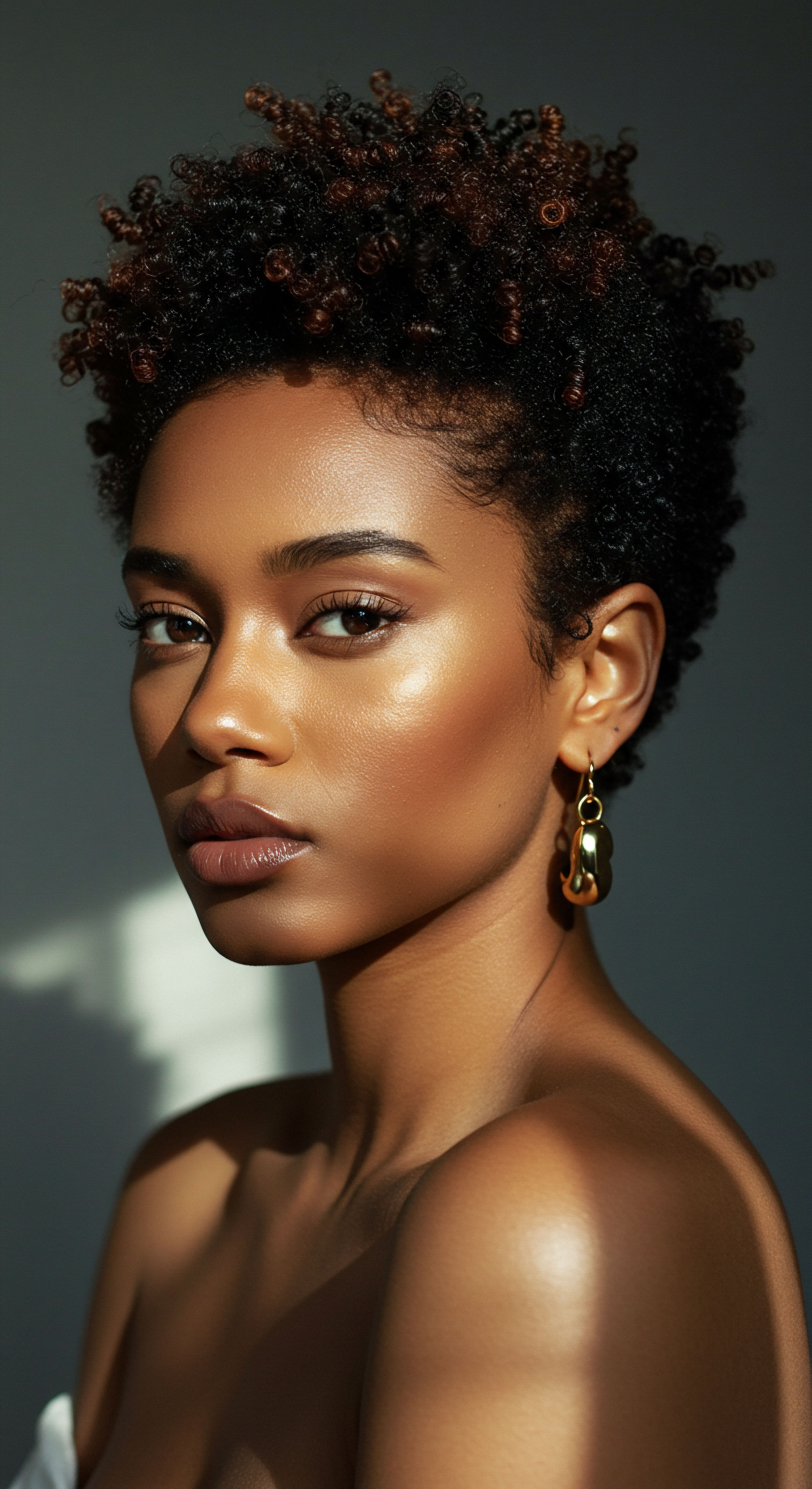
How Did Societal Changes Alter Historical Hair Care Traditions?
The transatlantic slave trade marked a devastating disruption to African hair traditions. Enslaved Africans were often subjected to forced head shaving, a deliberate and cruel act designed to strip them of their cultural identity and sever their connection to ancestral practices. This profound dehumanization aimed to erase their heritage, yet the resilience of these traditions found ways to persist.
Despite the oppressive conditions, knowledge of textured hair care was preserved, often in whispers and through adapted rituals. Braids, for example, transformed into secret maps for escape, carrying vital information for survival. The very act of communal grooming, though often hidden, became a quiet form of resistance, a way to maintain humanity and connection amidst immense hardship. The limited access to traditional tools and ingredients led to ingenious adaptations, with enslaved people crafting combs from wood or metal scraps and creating homemade concoctions from whatever natural elements they could find.
The subsequent societal pressures to conform to Eurocentric beauty standards further altered textured hair practices. From the late 19th century into the 20th, methods like hot combs and chemical relaxers became popular, driven by a desire for acceptance and social mobility in a discriminatory environment. This shift, while understandable given the context, often came at the expense of hair health, as these methods could damage the hair’s inherent structure, rendering it weak and brittle. The legacy of these historical shifts continues to influence contemporary perceptions and practices surrounding textured hair.
| Period/Event Pre-Colonial Africa |
| Impact on Hair Care Natural ingredients, diverse styles, communal grooming, spiritual significance. |
| Societal Implications Hair as a symbol of status, identity, and spiritual connection. |
| Period/Event Transatlantic Slave Trade |
| Impact on Hair Care Forced shaving, limited resources, adaptation of practices for survival. |
| Societal Implications Dehumanization, loss of overt cultural expression, covert resistance. |
| Period/Event Post-Slavery/Early 20th Century |
| Impact on Hair Care Rise of straightening tools and chemical relaxers. |
| Societal Implications Pressure to conform to Eurocentric beauty ideals for acceptance. |
| Period/Event Historical forces profoundly shaped the evolution of textured hair care, reflecting both resilience and adaptation. |

Reflection
The journey through the historical care of textured hair reveals a profound continuity, a deep well of knowledge flowing from ancient times to our present moment. The ingenuity, cultural richness, and resilience embedded in these practices stand as a powerful testament to human adaptability and the enduring significance of hair as a personal and collective expression. As we look upon the vibrant landscape of textured hair care today, we see echoes of those distant pasts, from the reverence for natural ingredients to the artistry of protective styles. It reminds us that every coil and curl carries not just its own unique structure, but also the whispers of generations who cared for it with intention, wisdom, and an unbreakable spirit.

References
- Oforiwa, Alice. The History and Culture of African Natural Hair ❉ From Ancient Times to Modern Trends. AMAKA Studio, 2023.
- McCreesh, Natalie. Study Finds Ancient Egyptians Cared About Hair. Biblical Archaeology Society, 2011.
- Ashby, Steven P. Archaeologies of Hair ❉ an introduction. Internet Archaeology 42, 2016.
- Tharps, Lori L. and Ayana Byrd. Hair Story ❉ Untangling the Roots of Black Hair in America. St. Martin’s Press, 2001.
- Ndhlovu, N. et al. Ethnobotanical study of medicinal plants used for skincare by Vhavenda women in Limpopo, South Africa. South African Journal of Botany, 2019.
- Prabhu, M. et al. Ethnobotanical survey of plants used for hair care by the Pachamalai tribe of Tamil Nadu, India. Journal of Ethnopharmacology, 2021.
- Ogunseye, Oluwaseun. What Every Dermatologist Must Know About the History of Black Hair. Cutis, 2023.
- Morgan, G.A. U.S. Patent 1,090,593, Hair Refiner. 1913.
- Grateau, Marcel. French Patent 101,675, Marcel Wave. 1872.
- Danna, C. et al. Ethnobotany of traditional cosmetics in Sicily. Journal of Ethnobiology and Ethnomedicine, 2022.
- Ashby, Steven P. Archaeologies of Hair ❉ The Head and Its Grooming from Ancient to Contemporary Societies. Brewminate, 2016.
- Yingngam, B. Ethnobotany, or more precisely, ethnomedicine, demonstrates strong connections among humans, plants, and their surroundings. Journal of Pharmaceutical Sciences, 22 Ayur, 2024.
- Kandil, Hoda Abd Allah, and Mahmoud El-Mohamdy Abdelhady Salama. The Role of the Hair in Ancient Egypt. International Journal of Tourism and Hospitality Management, 2018.
- BLAM UK CIC. The History of Black Hair. BLAM UK CIC, 2022.
- Oforiwa, Alice. The History and Culture of African Natural Hair ❉ From Ancient Times to Modern Trends. AMAKA Studio, 2023.